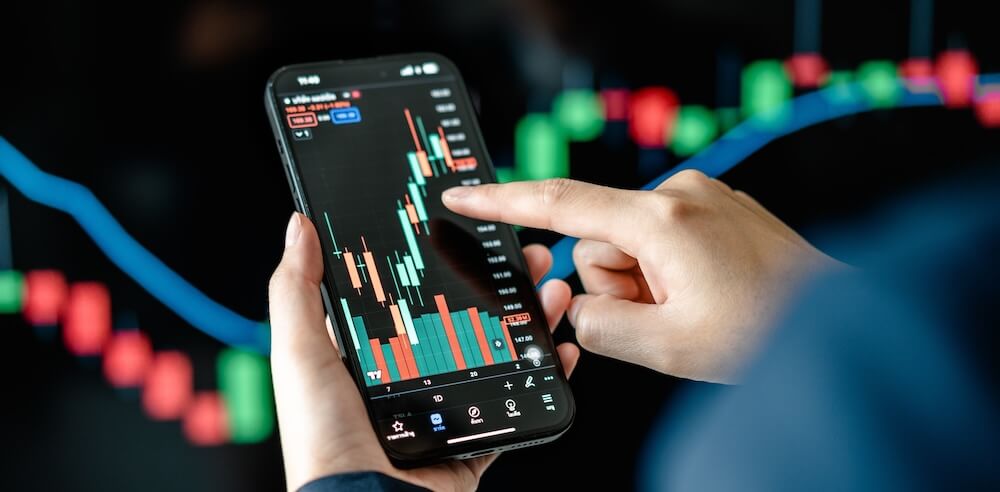
Posted March 17, 2025
By Enrique Abeyta
Come Collapse, Come Crisis… The System Is Rigged!
Just two short years ago, a (mini) banking crisis took down several large banks.
Surely, the names Silicon Valley Bank, Signature Bank, and First Republic Bank ring a bell.
At the time, many market watchers believed the crisis could spread, creating an all-out panic in the stock market.
But this year, the anniversary passed without anyone even noticing.
In fact, I doubt the average investor remembers many details about the short-lived “mini crisis” that unfolded in early 2023.
On this anniversary (and as the S&P 500 enters “correction territory” for the first time in nearly 30 months), I wanted to share my thoughts that I wrote back at that time.
Given the sentiment in the market right now, I think these insights are just as important to remember today. Enjoy!
“The System Is Rigged!”
This is something you may have heard in a lot of financial newsletters or on social media.
It's a common belief that the U.S. economy and financial markets are "rigged" to the advantage of large institutions and wealthy people.
While I don't consider myself much of a conspiracy theorist, I do think the system is rigged…
Rigged to sustain itself and survive.
While a perfectly "free" market has a certain amount of logical appeal, the reality of it is much more complicated — primarily due to the emotions and psychology of the human beings that make up the system.
What we are seeing right now are the efforts by financial authorities and governments to slow down the effect of the banking chaos.
They've been tasked to do this, and they do a pretty darn good job of it.
One Burning Building…Two Burning Buildings…Three!
One analogy I like to use about what's happening is comparing it to a house on fire in a neighborhood.
Let's say the neighborhood is an older development and could use some repairs, and it's been a pretty dry season.
One day, one of the houses catches on fire. The house was probably a fire waiting to happen, but it could have been avoided with some upkeep. The owners just made a mistake. That mistake, combined with the house's condition, puts it aflame...
Many houses in the neighborhood are in similarly bad shape and packed pretty tight. So, a few other nearby homes burn down within a couple of hours.
Now, folks are beginning to panic!
The fire department showed up to fight the fire, but most of the firefighters were volunteers who lived in this neighborhood.
This creates an issue. Most of the firefighters are more worried about their houses catching fire than fighting the existing fires. Their first inclination is to pack up their belongings and family and leave.
If they do this, though, they won't be around to fight the fire's spread, and it's a 100% certainty that their houses will burn down. That will put more houses in the neighborhood at risk, and if enough folks make the same decision, the entire neighborhood will burn.
At this point, the local government steps in to help. Officials let everyone know that even if their houses burn down, the government will build new ones.
Does the government have enough resources to rebuild every house in the neighborhood? Maybe, maybe not. But it doesn't matter.
It just needs to convince enough folks to stay put and fight the fire.
So, let's get back to how the system is rigged…
A Crisis of Confidence
The analogy above describes a bank run. And the most important ones for the U.S. happened less than a century ago, during the Great Depression.
This led to the establishment of the Federal Deposit Insurance Corporation ("FDIC") in June 1933 to ensure depositors would get their money back from the bank (or, per our analogy, that their houses would get rebuilt).
Since then, we've added many layers of protection and tools for regulators. But at its core, a bank run is a crisis of confidence.
In my 25-plus years of investing, one thing has always been true: Governments and regulators will do everything to ensure the system survives.
In my career, I've seen the Mexico crisis (1995), the Thai baht collapse (1997), the collapse of Long-Term Capital Management (1998), the bursting of the technology bubble (2000 to 2003), and the global financial crisis (2007 to 2009 in the U.S.)... and every single time, governments and regulators have used their tools to address the situation.
In each situation above, we had a crisis of credit, leading to a crisis of confidence. Currently, we're seeing very little of the former (for now) and a lot of the latter.
While there are still some complexities, the situation two years ago looked much more straightforward than the crises regulators have dealt with.
The actions of the regulators successfully stemmed the bleeding with relatively little damage to the overall system.
Remember — the system is rigged to survive!
Sign Up Today for Free!
Truth & Trends brings you market insights and trading tips you won't find anywhere else — unless you have your own personal hedge fund manager on speed dial...
Meet Enrique Abeyta, one of Wall Street’s most successful hedge fund managers. With years of experience managing billions of dollars and navigating the highs and lows of the financial markets, Enrique delivers unparalleled market insights straight to your inbox.
In Truth & Trends, Enrique shares his personal take on what’s moving the markets, revealing strategies that made him a star in the world of high finance. Whether it’s uncovering the next big trend or breaking down the hottest stocks and sectors, Enrique’s insights are sharp, actionable, and proven to work in any market condition.
Inside these daily updates, you’ll gain:
- 50 years of combined trading wisdom distilled into actionable insights.
- A behind-the-scenes look at how Wall Street pros spot opportunities and avoid pitfalls.
- Exclusive strategies that Enrique personally uses to deliver exceptional returns — no fluff, just results.
To have Truth & Trends sent directly to your inbox every weekday, just enter your email address below to join this exclusive community of informed traders.
Don’t miss your chance to learn from one of the best in the business.
Sign up now and take your trading game to the next level.

The Next Trillion-Dollar Whale
Posted March 28, 2025
By Greg Guenthner

Free Investment Tip: Fewer Stocks = Better Returns
Posted March 27, 2025
By Enrique Abeyta

TSLA Leaves Hate Sellers in the Dust
Posted March 25, 2025
By Greg Guenthner

One Company’s Secret to 47,535% Returns
Posted March 24, 2025
By Enrique Abeyta

How to Trade the “Bad News Bounce”
Posted March 21, 2025
By Greg Guenthner

